POLITICALLY CORRECT: SELECTIONS FROM A PRIVATE AMERICAN COLLECTION Robert Capa Liberation of France at the end of World War II 1944 Gelatin silver print, printed later. 10 x 13 7/8 in. (25.4 x 35.2 cm) ‘Photograph by Robert Capa/ Distributed by Magnum’ copyright credit, ‘Robert Capa-Magnum/ Courtesy Life Magazine’ credit, ‘Archive print from Magnum/ Released for sale to Pace MacGill’ and Magnum library stamps on the verso; printed title on a label affixed to the verso.
Provenance Pace/MacGill Gallery, New York Exhibited Pace/MacGill Gallery, New York, 14 September - 14 October 1985 Literature Manchester, In Our Time: The World As Seen by Magnum Photographers, cover and pp. 100-101 there titled and dated Liberation of Paris, August 25, 1944 Catalogue Essay “Change is the law of life,” President John F. Kennedy once declared. “And those who look only to the past or present are certain to miss the future.” Indeed, as a strong visionary President Kennedy oversaw a number of momentous changes that came to define mid-century America, many of which are strongly reflected in Politically Correct: Selections From a Private American Collection. As a group, the thirteen works provide a strong overview of a pivotal point in American history spanning from 1944 to 1969, when political currents swiftly thrust the country in different directions. As the earliest image in the collection, Robert Capa’s Liberation of France at the end of World War II, 1944, (lot 166), captures the triumphant upturn following America’s involvement in WWII, when Hitler’s grip over Europe loosened and ultimately broke. The pyramidal composition of smiles, raised arms and heavy crowding conveys the monumental sense of pride and relief that permeated Europe and likewise celebrated in America. This is in contrast to the equally poignant but irony-stricken image by Louis Faurer San Gennaro, New York, NY, 1950, (lot 172), which offers a more sardonic view on national pride. The image was taken during Little Italy’s annual San Gennaro festival, when a statue of the patron saint of Naples is carried aloft and paraded around to give devotees the opportunity to pin money on it. Captured by Faurer’s lens is an attendee, clad in a formal tux as he watches over the revered icon. Pinned to his lapel is a badge that identifies him as a member of the Society of San Gennaro, a powerful group within the political hierarchy of the local Italian-American community. By reducing the icon to its moneyed surface within the context of a religious festival Faurer’s image alludes to the intersection of capitalism and pride—be it religious or national—and questions the role money had come to play in defining faith and politics. The image ranks as among Faurer’s more critical and socially-conscious works, and it is therefore no surprise that he was described as “so intelligent and so angry, and having such passion for the world” by his friend and peer Robert Frank The artistic dialogue between Faurer and Frank can be seen in the two images by Frank included in the group: Chicago Convention, 1956, (lot 167) and Chicago, 1956, (lot 173). The former was taken at the end of the Democratic National Convention, when the young and relatively unknown Senator from Massachusetts, John F. Kennedy, lost his vice-presidential bid. Thecontest for a vice-president was a last-minute decision by the Democratic presidential candidate, Adlai Stevenson, to generate excitement for his bid, and left the candidates with a single day to campaign for the role. The poster declaring Senator Kennedy as “Our Choice” is seen plopped upside down amidst rows of deserted seats at the conclusion of the convention.While cleverly conveying Kennedy’s loss in the race, the image is a powerful reminder for modern-day viewers of the ebb and flow that abound in the political waters. Indeed, it is also in the latter image of Lady Bird Johnson, taken the same year, that Frank presents an image that achieves much more than a mere portrait. Well-educated and extraordinarily prescient, Johnsoncontributed greatly to the political success of her husband, then-Senate Majority Leader and later-presidential candidate Lyndon B. Johnson. By capturing Lady Bird Johnson at a low vantage point that posits her front and center while the poster of her husband floats atop, Frank captured their dynamic, whereby the presidential nominee benefitted from his wife’s prowess and presence. Indeed, Frank’s image alludes t
POLITICALLY CORRECT: SELECTIONS FROM A PRIVATE AMERICAN COLLECTION Robert Capa Liberation of France at the end of World War II 1944 Gelatin silver print, printed later. 10 x 13 7/8 in. (25.4 x 35.2 cm) ‘Photograph by Robert Capa/ Distributed by Magnum’ copyright credit, ‘Robert Capa-Magnum/ Courtesy Life Magazine’ credit, ‘Archive print from Magnum/ Released for sale to Pace MacGill’ and Magnum library stamps on the verso; printed title on a label affixed to the verso.
Provenance Pace/MacGill Gallery, New York Exhibited Pace/MacGill Gallery, New York, 14 September - 14 October 1985 Literature Manchester, In Our Time: The World As Seen by Magnum Photographers, cover and pp. 100-101 there titled and dated Liberation of Paris, August 25, 1944 Catalogue Essay “Change is the law of life,” President John F. Kennedy once declared. “And those who look only to the past or present are certain to miss the future.” Indeed, as a strong visionary President Kennedy oversaw a number of momentous changes that came to define mid-century America, many of which are strongly reflected in Politically Correct: Selections From a Private American Collection. As a group, the thirteen works provide a strong overview of a pivotal point in American history spanning from 1944 to 1969, when political currents swiftly thrust the country in different directions. As the earliest image in the collection, Robert Capa’s Liberation of France at the end of World War II, 1944, (lot 166), captures the triumphant upturn following America’s involvement in WWII, when Hitler’s grip over Europe loosened and ultimately broke. The pyramidal composition of smiles, raised arms and heavy crowding conveys the monumental sense of pride and relief that permeated Europe and likewise celebrated in America. This is in contrast to the equally poignant but irony-stricken image by Louis Faurer San Gennaro, New York, NY, 1950, (lot 172), which offers a more sardonic view on national pride. The image was taken during Little Italy’s annual San Gennaro festival, when a statue of the patron saint of Naples is carried aloft and paraded around to give devotees the opportunity to pin money on it. Captured by Faurer’s lens is an attendee, clad in a formal tux as he watches over the revered icon. Pinned to his lapel is a badge that identifies him as a member of the Society of San Gennaro, a powerful group within the political hierarchy of the local Italian-American community. By reducing the icon to its moneyed surface within the context of a religious festival Faurer’s image alludes to the intersection of capitalism and pride—be it religious or national—and questions the role money had come to play in defining faith and politics. The image ranks as among Faurer’s more critical and socially-conscious works, and it is therefore no surprise that he was described as “so intelligent and so angry, and having such passion for the world” by his friend and peer Robert Frank The artistic dialogue between Faurer and Frank can be seen in the two images by Frank included in the group: Chicago Convention, 1956, (lot 167) and Chicago, 1956, (lot 173). The former was taken at the end of the Democratic National Convention, when the young and relatively unknown Senator from Massachusetts, John F. Kennedy, lost his vice-presidential bid. Thecontest for a vice-president was a last-minute decision by the Democratic presidential candidate, Adlai Stevenson, to generate excitement for his bid, and left the candidates with a single day to campaign for the role. The poster declaring Senator Kennedy as “Our Choice” is seen plopped upside down amidst rows of deserted seats at the conclusion of the convention.While cleverly conveying Kennedy’s loss in the race, the image is a powerful reminder for modern-day viewers of the ebb and flow that abound in the political waters. Indeed, it is also in the latter image of Lady Bird Johnson, taken the same year, that Frank presents an image that achieves much more than a mere portrait. Well-educated and extraordinarily prescient, Johnsoncontributed greatly to the political success of her husband, then-Senate Majority Leader and later-presidential candidate Lyndon B. Johnson. By capturing Lady Bird Johnson at a low vantage point that posits her front and center while the poster of her husband floats atop, Frank captured their dynamic, whereby the presidential nominee benefitted from his wife’s prowess and presence. Indeed, Frank’s image alludes t
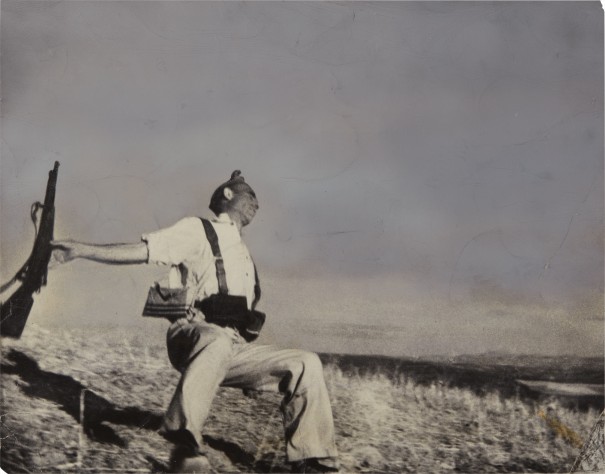
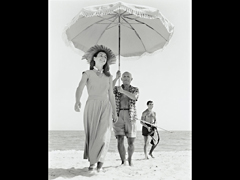

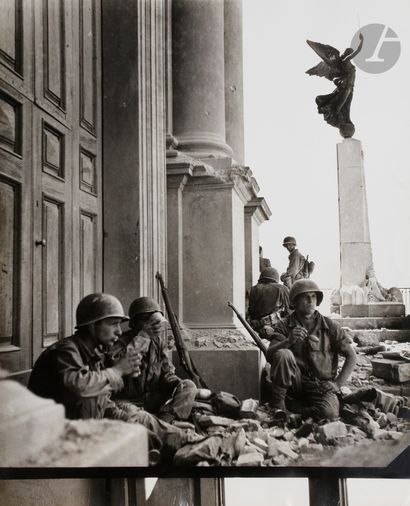
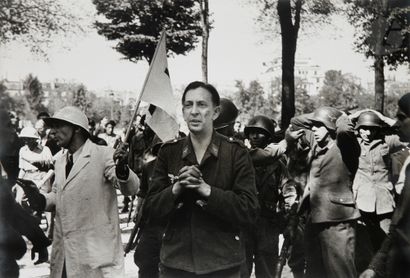





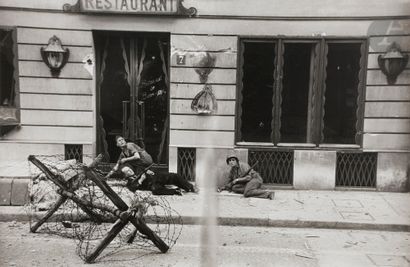



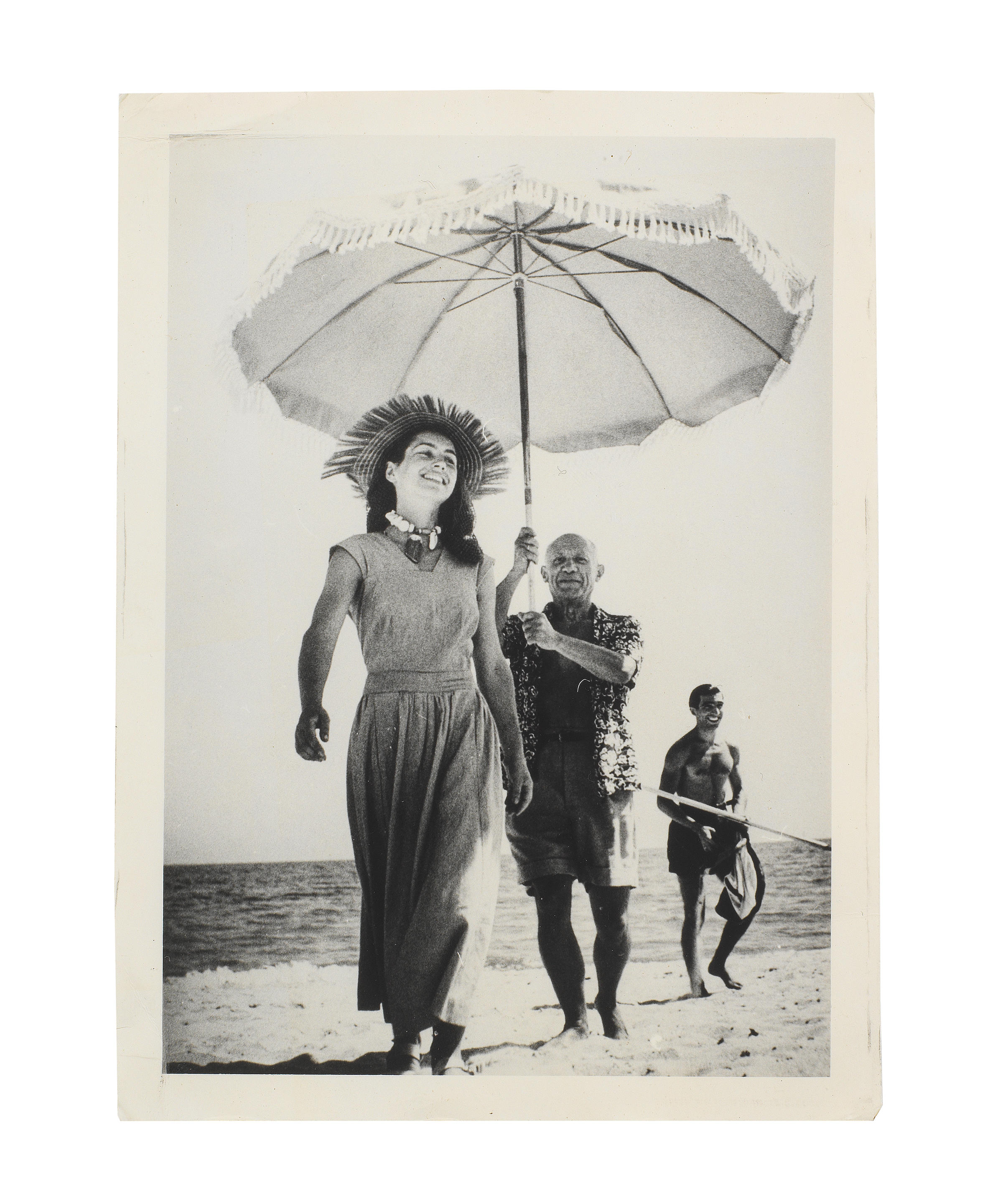
Testen Sie LotSearch und seine Premium-Features 7 Tage - ohne Kosten!
Lassen Sie sich automatisch über neue Objekte in kommenden Auktionen benachrichtigen.
Suchauftrag anlegen